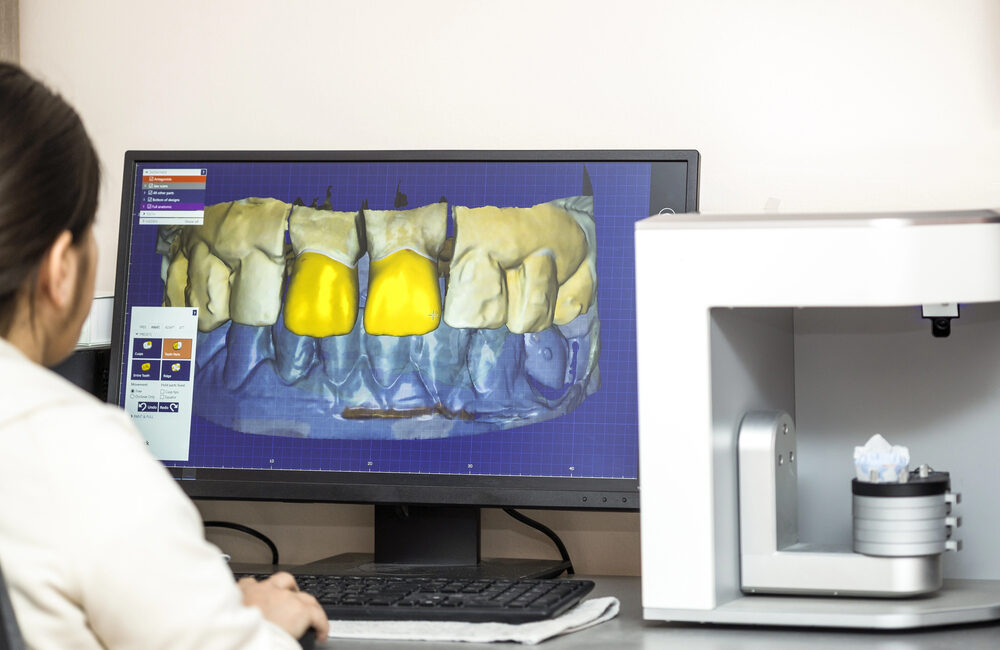
In the rapidly evolving field of dentistry, one technology that stands out for its transformative impact is Digital Smile Design (DSD). This cutting-edge approach enables dentists to craft personalized, aesthetic smiles with remarkable accuracy and predictability. Unlike traditional methods of smile makeovers that rely heavily on the dentist’s experience and manual techniques, Digital Smile Design integrates advanced technology to analyze, plan, and execute treatments. By harnessing digital tools, dentists can visualize outcomes before the first procedure even begins, delivering superior results tailored to each patient’s unique facial structure and dental needs.
At the core of DSD is its ability to provide precision and predictability—two critical factors that have elevated cosmetic and restorative dentistry to new heights. As patients increasingly seek out not just healthy but beautiful smiles, understanding how digital smile design works and its connection to the importance of oral hygiene is essential for both practitioners and patients.
What is Digital Smile Design?
Digital Smile Design (DSD) is a technology-driven process that allows dentists to digitally plan and visualize the final outcome of dental treatments. It involves the use of high-resolution imaging, 3D software, and digital modeling to design the perfect smile based on a patient’s individual anatomy and aesthetic goals. By using photographs, videos, and sometimes intraoral scans, the dentist can create a digital simulation of how the patient’s smile will look after treatment.
One of the most significant benefits of DSD is that it fosters better communication between the dentist and the patient. The digital mockup allows patients to see exactly what their future smile will look like, giving them the opportunity to provide input and ensure their aesthetic preferences are met. This collaborative aspect of the treatment process helps minimize surprises, boosts patient satisfaction, and builds trust between the patient and the practitioner.
Precision in Smile Design
The precision offered by Digital Smile Design is unparalleled. In traditional smile design, the dentist would rely on their own vision and manual measurements to plan a treatment. While effective, this method is more prone to human error and may not always account for the complexity of individual facial anatomy. DSD, on the other hand, uses software to analyze facial proportions, tooth positioning, and even lip movement, ensuring that the final result is harmonized with the patient’s overall facial aesthetics.
By incorporating precise measurements and data into the design process, dentists can achieve exceptional results that are not only aesthetically pleasing but also functionally superior. For example, the alignment of teeth can be adjusted to ensure optimal bite functionality, reducing the risk of future complications such as jaw pain or tooth wear. Additionally, DSD can be used to map out restorative procedures like veneers, crowns, or implants with a high degree of accuracy, ensuring a perfect fit and natural look.
Precision is also crucial when addressing complex dental issues such as misalignment, gaps, or tooth wear. Through digital planning, the dentist can anticipate potential challenges and customize the treatment to resolve them effectively. This level of accuracy greatly reduces the need for revisions and adjustments post-treatment, saving both time and money for the patient.
Predictability in Outcomes
The predictability that comes with Digital Smile Design is a game-changer for modern dental practices. Patients often feel anxious about the uncertainty of how their new smile will turn out. With DSD, that uncertainty is eliminated. The use of digital simulations allows the patient to see the expected results before any actual work is done, offering peace of mind and the opportunity to make informed decisions about their treatment.
This predictability extends beyond aesthetics. DSD provides a comprehensive blueprint for the entire treatment process, ensuring that each step—from tooth preparation to the placement of restorations—is carefully planned and executed with minimal deviations. The ability to foresee the final result before starting treatment ensures a higher degree of success, particularly in complex cases such as full-mouth rehabilitations or orthodontic corrections.
Moreover, DSD aids in improving communication within the dental team. When multiple specialists such as orthodontists, prosthodontists, and lab technicians are involved in a case, digital smile design ensures that everyone is aligned on the treatment goals and plan. This reduces the margin for error and ensures a seamless treatment process, further enhancing predictability.
The Role of Oral Hygiene in Digital Smile Design
While Digital Smile Design plays a crucial role in crafting beautiful, functional smiles, it is essential to remember that the foundation of any smile design lies in maintaining excellent oral hygiene. A healthy mouth is the canvas upon which a beautiful smile can be built, and neglecting oral hygiene can jeopardize the success of any cosmetic or restorative procedure.
Good oral hygiene practices, such as regular brushing, flossing, and dental check-ups, are critical in ensuring that the gums and teeth remain healthy throughout the smile design process. Digital smile design can help plan for restorative treatments, but if the patient’s oral health is compromised by issues like gum disease or tooth decay, the outcomes may be less than ideal. For instance, untreated gum disease can cause veneers or crowns to fail prematurely, requiring costly repairs or replacements.
Furthermore, patients undergoing digital smile design should be educated about the importance of oral hygiene to maintain their new smile long after the treatment is complete. Regular dental cleanings and proper at-home care will help preserve the longevity of cosmetic enhancements and prevent future dental issues.
Digital Smile Design represents a significant advancement in dentistry, offering unprecedented levels of precision and predictability in treatment outcomes. By leveraging cutting-edge technology, dentists can create personalized, aesthetically pleasing smiles that are not only beautiful but also functionally sound. However, the success of any smile design ultimately hinges on the patient’s commitment to good oral hygiene, which is essential for maintaining both oral health and the longevity of cosmetic results.
As digital tools continue to transform the field of dentistry, the combination of innovative technology and patient education on oral hygiene will remain key to achieving and preserving the perfect smile.



